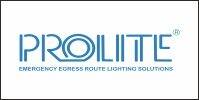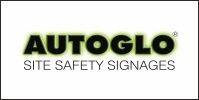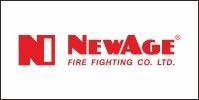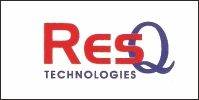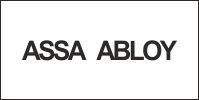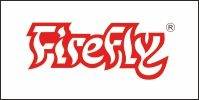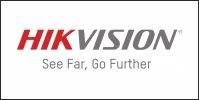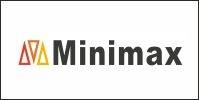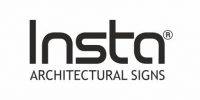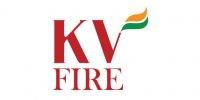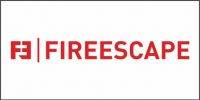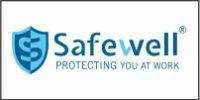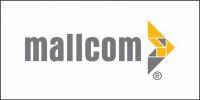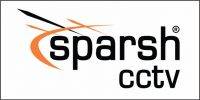 Integration and interoperability in smart buildings enhance value and reduce risks for the building owner.
Integration and interoperability in smart buildings enhance value and reduce risks for the building owner.
For an automation and integration plan to encompass a holistic solution, each technical design and engineering discipline needs to be committed to the goal of improving the way the building operates and the way the resultant information is prioritized to maximize efficiencies.
Each designer needs to begin by discussing and evaluating process outcomes. These discussions will enable each participant to identify needs and resources to deliver increased autonomous responses to improve safety and increase energy efficiency while reducing personnel interaction for common processes by automatically selecting appropriate responses based on historical data. This effort will improve overall building performance and operational efficiency.
Recommendations from stakeholders are vital and can provide a significant return for real-time process control, which will likely create the largest increase in end-user satisfaction. To do this, each member of the design team needs to identify the standard inputs and outputs of each system they are responsible for as part of the system-integration matrix. It is then up to each member to review the matrix and try to determine the best ways that each system output can be used by the system that they are designing. In doing this, they may be saving steps for another system, providing a check on the operation of another system, or allowing the elimination of the programming of another system altogether.
For instance, in a health care facility, staff-assist buttons at patient beds typically alarm the nurse call station at the local unit and provide a local audio/visual alarm at the patient room dome light. However, incorporating this into the real-time locating system (RTLS) can track staff throughout the building-and will allow the system to directly page or alert staff in the immediate area and query a response so that other caregivers can remain at their positions and not disrupt care. Reporting the response of these events is completed automatically eliminating the staffs’ need to manually record the event.
Building decisions can no longer be made based on stand-alone systems. Conventional isolated systems were installed and configured for optimization based on their own parameters and needs; often times duplicating programming and information. As systems advanced, it became common for each legacy solution to control and operate proprietary devices, which simultaneously increased first costs and energy costs while marginally improving the overall performance of the individual systems.
Building systems continued to advance and move toward standardized Internet Protocol (IP) infrastructure and communication protocols, increasing functionality between systems. The increased interoperability was partly due to the release of the American National Standards Institute/ Telecommunications Industry Association (ANSI/TIA) – 862-A Building Automation Systems Cabling (March 2011) and, more recently, TIA-862-B: Structured Cabling Infrastructure Standard for Intelligent Building Systems. Using the IP network as a platform allowed for standardized devices, which exploded onto the market and onto the building data network.
These connected devices are made more efficient by Power over Ethernet (PoE) functionality, which reduces costs by providing digital data and power over a single cable to many devices. These devices include voice over internet protocol (VoIP) telephone handsets, video surveillance cameras, PoE locksets, wireless access points, and integrated sensors.
The conventional systems began to make way for integrated systems as the cost-effectiveness of third-party devices improved communications and lifecycle costs. Through this transition, these solutions created a migration path for shared databases and resources as well as integrated management, allowing systems and resources to converge onto a single platform using shared servers and cloud-based computing.
With multiple systems sharing computing resources, cybersecurity is imperative in system implementation. Well-publicized security breaches in high-profile data networks were achieved through management/control ports into building systems. In addition, individual devices have been found to be a security threat to the very networks or buildings they intend to improve.
These integrated systems are providing additional information to understand the building-performance metrics to maximize the return on investment (ROI) of the building systems. To obtain these enhanced system performances, the building systems need to communicate to gain system efficiencies and savings. This reporting simplifies management and reduces downtime. Oversimplification of the coordination required for integration can lead to potential issues between system providers and/or manufacturers and the potential issues with the resultant labor costs for providing the integration.
A responsibility matrix is an efficient tool for identifying the individual providers for each step of the integration process. It outlines responsibilities for each step in the process-such as specifier, provider, programmer, installer-and resultant outcomes to individual devices.
Performance optimization
 System integration is improved by allowing multiple systems to automatically interface with each other through the use of application programming interfaces (APIs). Historically, these APIs grew from shared, open, connectivity-compliant databases, which reduced the ongoing management efforts of such systems. In addition, managing the different systems can be consolidated to fewer vendors, which further reduces the potential for security breaches and lowers initial first costs by using fewer vendors.
System integration is improved by allowing multiple systems to automatically interface with each other through the use of application programming interfaces (APIs). Historically, these APIs grew from shared, open, connectivity-compliant databases, which reduced the ongoing management efforts of such systems. In addition, managing the different systems can be consolidated to fewer vendors, which further reduces the potential for security breaches and lowers initial first costs by using fewer vendors.
The integrated solution offers additional information to manage the facility and helps to automate the management of the building lifecycle. The goal of having an integrated facility is multifold: Improve energy efficiency, life safety, and the user experience by minimizing previously redundant tasks that can be completed by automated analytics.
Human-to-machine (H2M) and machine-to-human (M2H) interfaces have been common. But building occupants have become accustomed to the efficiencies and freedoms that they have in their homes and vehicles and even right at their fingertips on their handheld devices. These expectations have begun to translate to their work life through machine-to-machine (M2M) intelligence, such as networked sensors and connected devices that provide similar efficiencies at work.
For instance, automated lighting and temperature controls save energy in conference rooms that are unoccupied for long periods of time. Users can request a notification for the next available conference room based on the occupancy sensor. And automated requests in nursing areas inform staff of a patients’ request without having to initially talk with the patient. These devices enable end users to be more responsive, while operations are more effective and overall quality is improved significantly with real-time process automation.
Connected devices and automated devices refer to the smart devices that are providing information to feed the internet of things (IoT), such as door locks, cameras, thermostats, lighting, HVAC controls, real-time location systems, audio/video (AV) equipment, and much more. The integration of these devices and their ability to communicate with each other and for each other enable new efficiencies by using historical data to improve the outcome. The devices help the systems learn and understand from the environment to make better assessments based on the information provided.
PoE lighting systems also are flooding the market, with manufacturers projecting steady growth in installations in the next year as they ramp up marketing and training for their solutions. While traditional digital lighting controls with LED lighting have proved energy-efficient and become the norm, specific controls, such as daylight harvesting, circadian rhythm experience, and system dashboard monitoring, have been costly for many building projects. These solutions continue to be extra add-ons for traditional lighting systems, but they are inherent to PoE lighting systems because the control of each luminaire is part of its standard topology.
Individual PoE luminaires are equipped with multifunctional sensors for temperature, occupancy, and monitoring to take advantage of their communications capability essentially providing specific control of each luminaire. Coupling this with reduced costs on infrastructure as new connectivity standards are developed-such as single-pair communication protocols for low-bandwidth applications and multi-functional wireless devices with improved battery life-connected devices will continue to increase in the building.
Reporting allows the building manager to track seasonal and cyclical usage of buildings and the different spaces within the building to maximize ROI.
Integrated systems
The systems involved in a smart building are continuing to expand and are not limited to traditional building automation systems (BAS), lighting, and HVAC. They can encompass security solutions, such as access systems, video surveillance systems, and wayfinding systems. Across all building construction markets, using an integrated building approach has created new ways for systems to learn information and apply it to other systems.
For example, occupancy sensors previously used for only lighting controls are multifunctional, providing analytics, such as room usage for building and room rightsizing, intrusion detection for security, and operational control of AV systems by recognizing individual users and automatically connecting them with conference solutions.
Video analytics used in video-management systems are providing safety and convenience applications for end users. In some applications, video is still being monitored by security staff, which is counterproductive in creating a visible presence and not a good use of personnel resources. Increasingly, due to the number of cameras and the cost to monitor cameras, intelligent software is being used to analyze video footage in real time to alert staff of issues, eliminating human error and initiating an automated response to alert field staff who are in proximity to the event and other remote notifications. This is particularly effective in duress situations.
While facial-recognition software continues to improve and provide benefits to K-12 schools and universities, video or web-service applications have been developed to report weather updates, determine traffic (parking) congestion, or recognize crowd formation (i.e., long lines) to alert staff of the need for customer service attention.
Additional applications are being used for safety and security, like automated recognition of ambulances at emergency rooms or auto-recognition of high water at oceanside areas. While video analytics can assist in public environments, integrating with RTLS is becoming advantageous to businesses where staff and assets are accountable. Using radio-frequency identification tags to locate equipment and staff has become increasingly common. Integrating asset tags with the billing system to track usage has improved billing in medical environments. Integrating with staff badges has allowed hospitals to track infection-control procedures, including the ability to track hospital-acquired infections and reduce subsequent lawsuits. Safety, convenience, and functional features are driving the market for this integration.
To improve integration, technology using standard protocols is migrating to newer platforms with inherent interoperability, reducing overall system costs. Integrators are creating more open standards to allow incorporation with feature-rich end-point devices and controllers, as they see the benefits of being able to work with another manufacturer’s equipment.
The recent evolution of building subsystems allows facilities to more easily gather networkable information to analyze, benchmark, correct, manage, and improve the performance of their facility and the human resources within. Facility design and construction professionals must move from discipline-based to holistic-model-based and integrator-based thinking. Facility leadership can thus proactively plan and act-instead of having to constantly react to changing conditions or emergencies.
Getting the right data to the right people at the right time is the game changer. Converged knowledge and data management is the key to obtaining a high-performance facility. Stakeholders must now focus on their facility or project being “fit” through appropriate facility-integrated technology.












